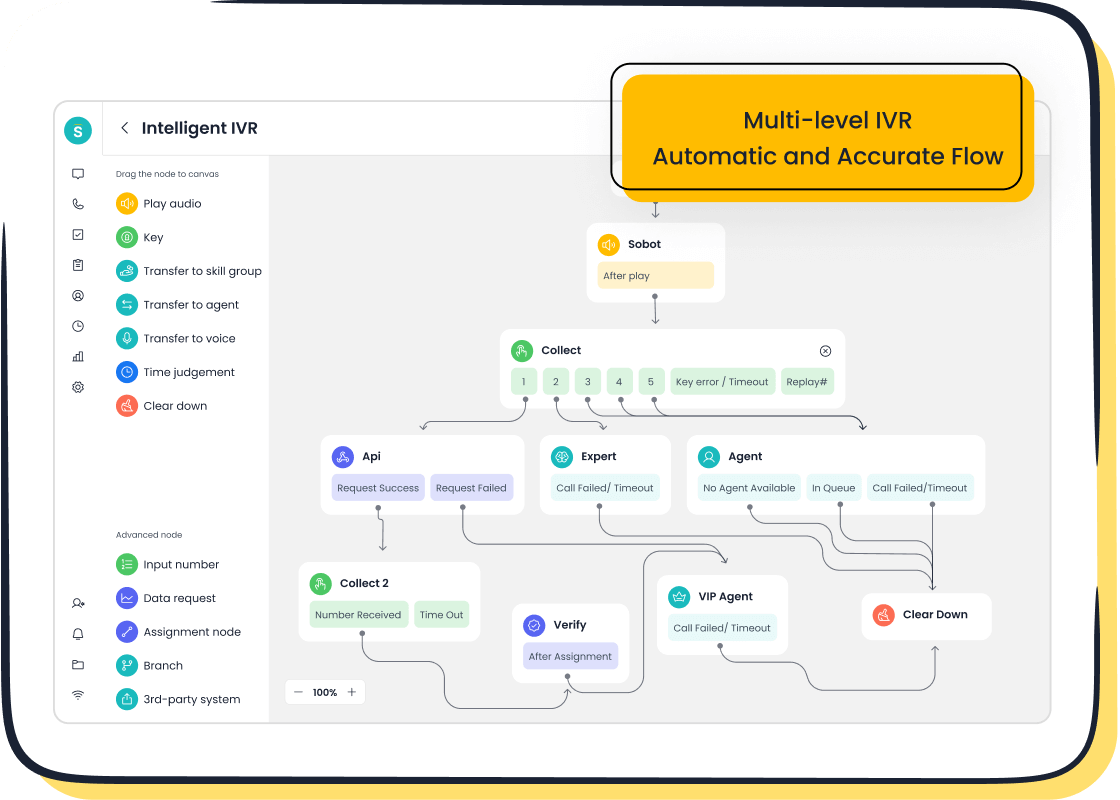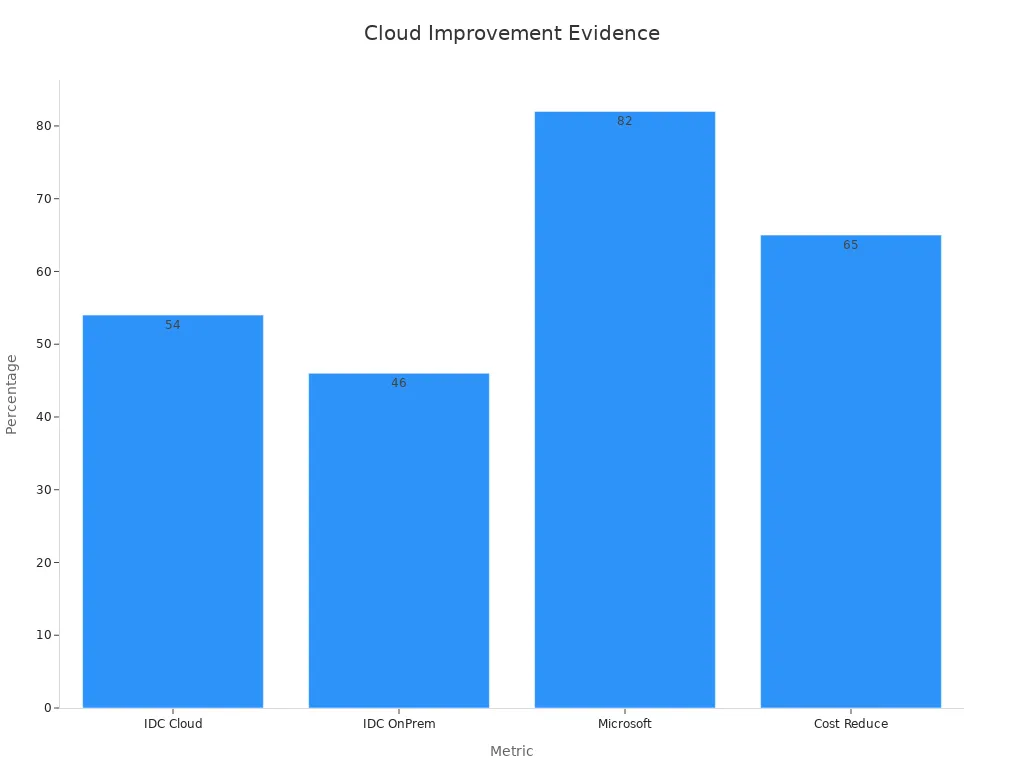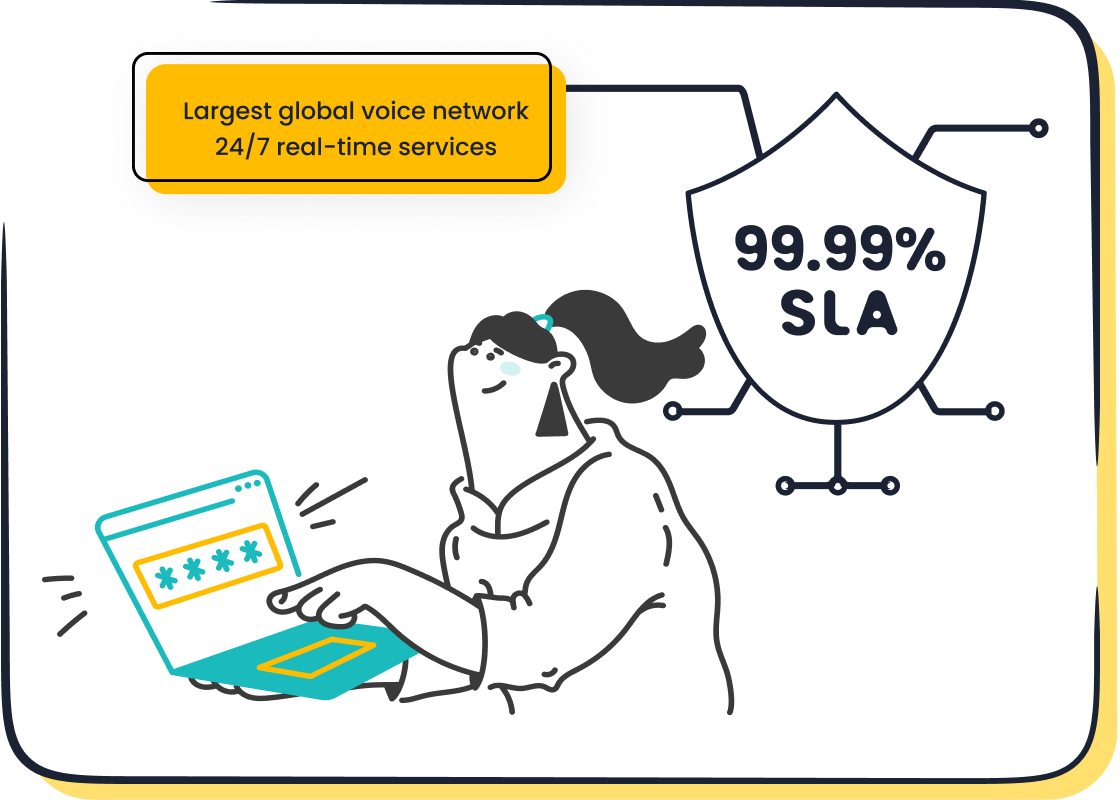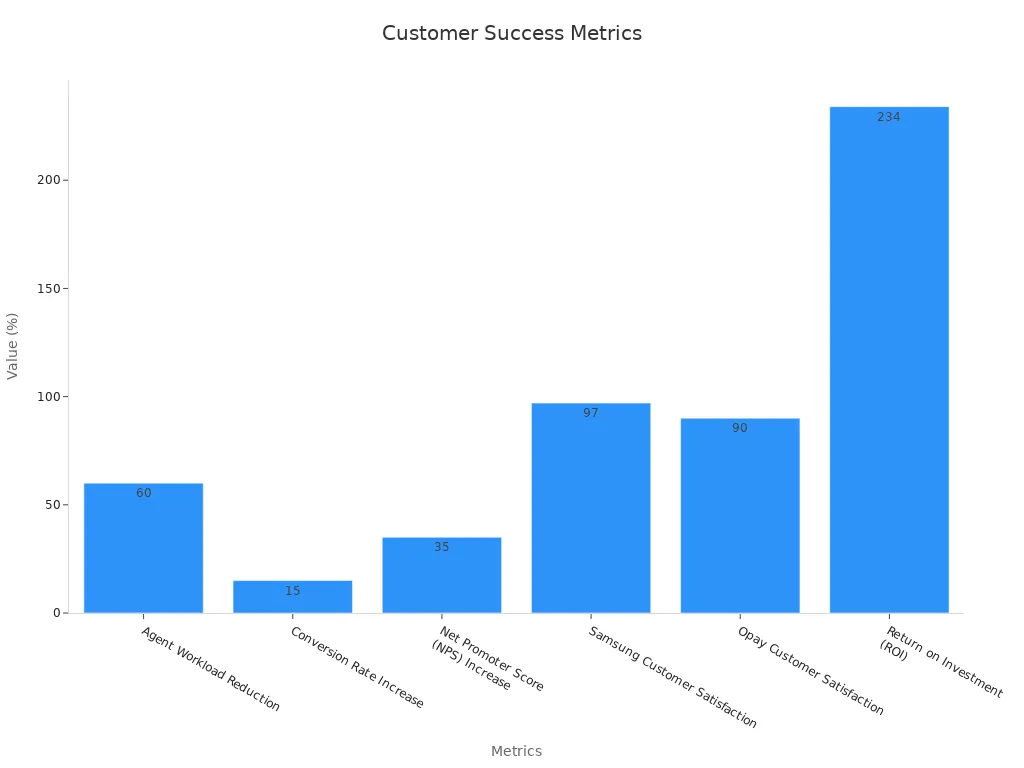Cloud Contact Center Benefits or On-Premises What’s Best in 2025

In 2025, you will likely find that a cloud contact center outperforms an on-premises system for most businesses. Nearly 94% of enterprises now use cloud services, with 89% using more than one provider. Customers demand fast, flexible, and reliable service—73% will leave after a single bad experience. Cloud contact center benefits include easy scalability, omnichannel support, and cost savings. Sobot, trusted by global brands, delivers these advantages with Sobot AI and a 99.99% uptime guarantee. On-premises setups offer control but cannot match the speed and innovation of modern cloud solutions.
Definitions
Cloud Contact Center

A cloud contact center uses cloud-based technology to deliver customer service through the internet. You access the platform from anywhere, using only a browser or app. Cloud-based solutions do not require you to buy or maintain servers. The provider, such as Sobot, manages all updates, security, and infrastructure. You can deploy a cloud contact center quickly, often within days. This model supports remote work and lets you scale up or down as your business changes. Sobot’s cloud-based solutions offer features like AI-powered voicebots, global number availability, and a unified workspace for agents. With a 99.99% uptime, you get reliable service and advanced analytics. Many businesses choose cloud-based contact centers to reduce costs and improve flexibility.
On-Premises Contact Center
An on-premises contact center runs on hardware and software that you own and manage at your physical location. You must set up servers, phone systems, and security protocols. This model gives you full control over your data and systems. However, you need a dedicated IT team for maintenance and upgrades. On-premises solutions often require higher upfront investment and longer deployment times. Scaling your on-premise contact center means buying more hardware and making physical changes. This approach may suit companies in highly regulated industries that need strict data control. Still, it can limit remote work and flexibility.
Tip: Understanding the core differences between cloud-based and on-premises contact centers helps you choose the right solution for your business goals.
| Aspect | Cloud Contact Centers | On-Premises Contact Centers |
|---|---|---|
| Definition | Customer service platforms running on cloud-based infrastructure hosted by third-party providers. | Installed and hosted on a company’s own infrastructure, with hardware, software, and data owned internally. |
| Setup Costs & Deployment | Lower upfront costs; faster deployment; pay-as-you-go monthly subscription model. | Higher upfront costs; longer deployment time; requires building infrastructure from scratch. |
| Hardware & Infrastructure | Hosted on remote servers offsite; no physical space required. | Requires physical space; company must purchase and maintain own servers and hardware. |
| Maintenance & Ongoing Costs | Maintained by third-party provider; reduces need for dedicated IT staff; lower ongoing costs. | Requires dedicated IT staff for maintenance and upgrades; higher ongoing costs. |
| Data Security & Privacy | Security managed by provider; less control over data and protocols. | Superior security control; companies implement unique security protocols; full control over data and hardware. |
| Agent Productivity & Analytics | Newer, feature-rich software; includes auto-dialing, call transcription; better analytics and reporting. | Older software; fewer advanced features; less robust analytics. |
| Remote Access | Supports remote work; accessible over the internet. | Typically requires agents to be onsite; relies on older technology like desk phones. |
| Scalability | Easily scalable up or down by adding/removing users via software. | Scaling requires purchasing new hardware and physical modifications. |
| Reliability & Downtime | Geo-redundant infrastructure across locations; higher reliability and less downtime. | Dependent on local infrastructure; vulnerable to power outages and disasters causing downtime. |
| Third-Party Integrations | Modern, agile software with built-in integrations for CRM, workforce management, and more. | Requires custom coding for integrations; less flexible. |
Sobot stands out as a leader in cloud contact center solutions. You can trust Sobot’s cloud-based platform to deliver seamless, secure, and scalable customer service for any industry.
Cloud Contact Center Benefits

Flexibility
You gain unmatched flexibility with a cloud-based contact center. You can add or remove agents in minutes, launch new channels, or adjust workflows as your business changes. Cloud-based solutions like Sobot let you respond quickly to seasonal spikes or sudden growth. Real-time analytics and AI-powered automation help you make agile decisions and improve processes. Many companies report a 45% increase in First Contact Resolution and a 25% reduction in Average Handling Time after switching to cloud-based technology. This flexibility leads to better customer experience and higher customer satisfaction.
Scalability
Cloud contact center benefits include true scalability. You can scale operations up or down without worrying about hardware limits. Sobot’s cloud-based platform supports global teams and handles fluctuating demand with ease. Companies see 20-30% improvements in customer satisfaction and Net Promoter Score within a year of adopting cloud-based solutions. The table below shows how cloud contact centers outperform traditional systems in scalability and reliability:
| Feature | Traditional On-Premises Contact Center | Cloud Contact Center Solution |
|---|---|---|
| Deployment Time | Weeks to months | Hours to days |
| Scalability | Limited by physical hardware capacity | On-demand scaling without hardware constraints |
| Remote Work Support | Requires complex VPN and setups | Native support enabling agents to work from anywhere |
| Upfront Costs | High (hardware, licenses, installation) | Low (subscription-based, no hardware investment) |
| Maintenance | Requires internal IT team | Handled by provider with automatic updates |
| Disaster Recovery | Requires redundant systems | Built-in resilience and geo-redundant data centers |
Remote Work
Cloud-based contact centers offer remote accessibility for your teams. Agents can work from anywhere with an internet connection, supporting flexible remote work capabilities and hybrid models. This accessibility expands your talent pool and enables 24/7 service. Sobot’s cloud-based solutions provide a unified workspace and seamless integration with your existing systems, ensuring agents stay productive and connected. According to industry reports, 60% of credit unions adopted remote work in their contact centers by 2023, driven by the need for flexibility and cost-effectiveness. Cloud contact center benefits also include higher uptime and reliability, with Sobot guaranteeing 99.99% uptime for uninterrupted service.
Savings
You achieve significant cost savings with a cloud-based contact center. You avoid heavy upfront investments in hardware and infrastructure, paying only for what you use. Cloud-based solutions reduce ongoing maintenance costs and labor expenses. Microsoft reports that 82% of small businesses see cost reductions after moving to the cloud. Cloud contact centers can cut costs by up to 65% compared to traditional landlines. Sobot’s cloud-based platform delivers cost-effectiveness, reliability, and productivity gains, helping you reinvest in enhanced customer experiences.

Sobot’s 99.99% uptime, global reach, and omnichannel capabilities ensure you deliver consistent, reliable service to your customers—no matter where your team works.
On-Premises Contact Center Advantages
Control
You gain complete control over your customer data and systems with an on-premises contact center. You decide how to store, manage, and protect your information. Your IT team can set up hardware, software, and phone systems to match your business needs. Many organizations choose on-premises because they want to keep all data within their own walls. This approach reduces the risk of data breaches and unauthorized access. You can also create full audit trails and manage role-based security, which helps you track every action and change in your system. For companies in healthcare or finance, this level of control supports strict compliance requirements.
- You host all data on company-owned servers.
- You manage hardware and software directly.
- You set your own security protocols and privacy measures.
- You maintain full oversight of environmental conditions and maintenance.
Security
Security stands as a top reason to select an on-premises contact center. You can align your security protocols with your internal policies and industry standards. On-premises solutions let you keep sensitive data behind your company firewall, which helps you meet strict regulatory requirements. Many businesses in highly regulated sectors, such as healthcare and banking, rely on on-premises to ensure compliance with laws like HIPAA or GDPR. You can also choose security certifications that fit your needs, such as ISO 27001 or ISAE 3000. Physical control over your servers gives you peace of mind and allows for faster response to any security issue.
- On-premises solutions support compliance across multiple jurisdictions.
- You can provide full audit trails and data lineage for transparency.
- Your IT team handles all security updates and patches.
- You reduce operational risk by keeping data in-house.
Note: On-premises contact centers often suit organizations with unique compliance needs or those operating in regions with strict data privacy laws.
Customization
You can customize an on-premise contact center to fit your exact business processes. On-premises solutions allow you to go beyond standard features and tailor workflows, integrations, and reporting tools. Your IT team can build custom integrations with legacy systems, which is important if you use older software or hardware. This flexibility helps you maintain business continuity and meet specific operational needs. You also control how your agents interact with customers, which can improve service quality.
- You enable deep customization of features and workflows.
- You integrate with legacy systems and internal tools.
- You support unique compliance and governance policies.
- You maintain direct oversight of all system changes.
If your business operates in a highly regulated industry or requires advanced customization, an on-premises contact center may be the best fit. Sobot understands these needs and offers flexible deployment options, including on-premises solutions, to help you meet your compliance and integration goals. Learn more about Sobot’s approach to secure and compliant contact center deployments on the official website.
Comparison: Cloud vs On-Premises

Cost & Savings
You will notice a clear difference in cost and savings when comparing cloud-based and on-premises solutions. Cloud contact center benefits include lower upfront costs because you do not need to buy expensive hardware. You pay a predictable monthly fee, which covers maintenance, updates, and support. Over five years, cloud-based models can save you up to $162,000 compared to on-premises, which often reach $522,000 in total costs. On-premises require large capital investments, ongoing maintenance fees, and dedicated IT staff. Cloud-based platforms like Sobot also help you avoid hidden expenses such as power, cooling, and disaster recovery. Most businesses see greater cost-effectiveness and cost savings with cloud-based solutions, especially when you factor in reduced operational expenses and faster deployment.
Tip: Always perform a detailed cost analysis to match your IT spending with your business goals and avoid unexpected expenses.
Flexibility & Scalability
Cloud contact center benefits shine when you need flexibility and scalability. You can add or remove agents in minutes, launch new channels, and support remote work with ease. Cloud-based platforms scale instantly without hardware changes. On-premises, on the other hand, require you to buy new equipment and wait weeks or months for upgrades. Cloud-based solutions reduce hardware costs by 58% and cut integration time by 34%. Virtual contact centers also lower operational costs by about 30% and boost agent productivity by 47%. You can quickly adjust staffing during busy seasons, which improves customer experience and customer satisfaction. On-premises limit your ability to scale and adapt to changing business needs.
| Feature | Cloud-Based Contact Center | On-Premises Contact Center |
|---|---|---|
| Scalability | Instant, software-based | Slow, hardware-dependent |
| Flexibility | High, supports remote work | Limited, mostly on-site |
| Integration Speed | Fast (days) | Slow (weeks to months) |
| Cost Savings | Significant | Minimal |
Security & Compliance
Security and compliance matter for every business. On-premises contact centers give you full control over your data, security protocols, and compliance measures. This is important for industries like healthcare and finance. You can set your own encryption standards and data storage policies. Cloud-based contact centers, such as Sobot, offer strong security with data encryption, compliance certifications, and continuous monitoring. Providers manage updates and patches, which reduces your risk of missing critical fixes. Cloud-based solutions use geographically distributed data centers for high availability and disaster recovery. While on-premises offer more customization, cloud-based platforms meet most industry standards and provide reliable protection for your data.
- On-premises: Maximum control, best for strict regulations.
- Cloud-based: Strong security, automatic updates, high availability.
Maintenance
Maintenance is much easier with cloud-based contact centers. Your provider handles updates, repairs, and troubleshooting. This reduces your IT workload and lowers ongoing maintenance expenses. You pay a predictable monthly fee that covers all maintenance, updates, and security. On-premises require you to hire IT staff for regular updates and repairs, which increases costs and takes time away from strategic projects. Cloud-based platforms like Sobot deliver new features, such as AI and omnichannel support, as soon as they are released. You gain operational efficiency and keep your team focused on improving customer experience.
| Aspect | On-Premises | Cloud-Based |
|---|---|---|
| Maintenance Costs | High, requires IT staff | Low, included in subscription |
| Updates & Patches | Manual, can be delayed | Automatic, always up-to-date |
| Feature Availability | Limited, slower upgrades | Continuous, instant access |
| Remote Work Support | Restricted | Full support |
Note: Cloud-based contact centers like Sobot help you stay agile, reduce expenses, and focus on delivering excellent customer service.
Choosing the Right Solution
Business Size
You should consider your company’s size when selecting between cloud contact center and on-premises solutions. Small and medium businesses (SMBs) often benefit from cloud-based platforms because they offer fast deployment, lower upfront costs, and easy scalability. Enterprises with global operations may require advanced features and integrations. For example, Amazon and UPS use tailored solutions to optimize operations and personalize customer experience. These companies show that aligning your contact center with your business size and goals leads to better results.
- SMBs: Prefer cloud-based for flexibility and cost savings.
- Large enterprises: May need custom integrations, but cloud contact center platforms now support complex needs.
Industry Needs
Your industry shapes your requirements. Retailers and ecommerce brands need omnichannel support and rapid scaling. Financial services and healthcare organizations often choose on-premises for strict data control and compliance. Companies like Walmart, Netflix, and Bank of America demonstrate that industry-specific needs drive the choice between cloud-based and on-premises models. You should match your solution to your customer needs and regulatory environment.
Budget & IT Resources
Budget and IT resources play a major role in your decision. Cloud contact center solutions reduce capital expenses and ongoing maintenance. You do not need a large IT team for updates or troubleshooting. On-premises systems require significant investment in hardware, software, and skilled staff. If you want predictable costs and less IT burden, cloud-based options provide clear advantages.
Tip: Assess your IT team’s capacity before committing to an on-premises deployment.
Sobot Solutions
Sobot adapts to businesses of all sizes and industries. You gain accessibility, scalability, and security with Sobot’s cloud contact center. Companies like Opay improved customer satisfaction to 90% after switching to Sobot. Samsung reached a 97% CSAT score, and Agilent saw a sixfold increase in efficiency. The table below highlights key success metrics:
| Metric / Example | Value / Description |
|---|---|
| Agent Workload Reduction | 60% decrease |
| Conversion Rate Increase | 15% improvement |
| Net Promoter Score (NPS) Increase | 35% improvement |
| Resolution Time | Under 1 minute |
| ROI | 234% |
| Samsung Customer Satisfaction | 97% CSAT |
| Opay Customer Satisfaction | 90% CSAT |
| Agilent Efficiency Improvement | 6x increase |

Sobot’s cloud contact center delivers measurable improvements in efficiency, customer satisfaction, and ROI. You can explore more customer stories and see how Sobot meets diverse business needs on the official website.
Migration to Cloud Contact Center
Steps
Migrating from an on-premises system to a cloud contact center involves careful planning and execution. You can follow these steps to ensure a smooth transition:
- Assess your current environment. Review customer satisfaction, agent productivity, total cost of ownership, scalability, and security.
- Develop a migration plan. Address data security, access, and integration needs.
- Choose a migration partner that matches your business goals. Sobot offers expert guidance and seamless integration with your existing systems.
- Test the new environment. Check security, data portability, scalability, and workflow automation before going live.
- Prioritize customer experience. Make sure you support all preferred communication channels.
- Train your agents. Help them adapt to the new cloud contact center tools.
- Provide ongoing support. Manage data storage, call routing, and analytics during and after migration.
- Define your organizational requirements. Look beyond the contact center to ensure smooth integration.
- Evaluate resources. Consider infrastructure, backup, and scalability.
- Decide which applications to migrate. Focus on long-term goals for your telecom infrastructure.
- Measure performance after migration. Celebrate early wins to keep your team motivated.
Sobot’s migration experts help you at every stage, from planning to post-launch support.
Challenges
You may face several challenges during migration. Common risks include data breaches, compliance issues, operational disruptions, and performance problems. You might also encounter difficulties with resource provisioning, integration, and data loss. Some organizations worry about losing control over their infrastructure or facing unexpected costs.
A real-world example comes from Siemens Betriebskrankenkasse (SBK), which migrated a large-scale contact center across 94 locations. They focused on data security and integration, achieving zero service disruption and improved compliance. Thurgauer Kantonalbank (TKB) used a phased approach to meet strict banking regulations, resulting in better efficiency and customer experience.
Careful planning and the right partner can help you overcome these obstacles.
Best Practices
You can reduce migration risks by following proven best practices:
- Conduct a thorough pre-migration assessment and compatibility test.
- Plan extensively and run a proof of concept in your actual environment.
- Use end-to-end encrypted data transfer to protect sensitive information.
- Schedule migration outside peak business hours to minimize impact.
- Implement backup strategies to prevent data loss.
- Train your team to spot and respond to risks.
- Review your provider’s shared responsibility model for security.
- Modernize your IT infrastructure before migration.
- Use cloud-native platforms to manage resources efficiently.
Sobot supports you with secure, encrypted data transfer, robust backup options, and ongoing training. You gain peace of mind knowing your cloud contact center migration is in expert hands.
You see clear advantages with cloud contact centers over on-premises systems in 2025. Most businesses achieve higher customer satisfaction, faster response times, and better agent performance. The table below shows how cloud solutions outperform on-premises in key metrics:
| Metric | Benchmark / Statistic |
|---|---|
| Customer Satisfaction | High scores >95% |
| First Call Resolution | ≥74% |
| Service Level | 80% answered within 20 seconds |
| Employee Satisfaction | +62% boost in customer scores |
You should review your needs and compare them to on-premises options. Sobot helps you migrate from on-premises to cloud, offering expert support and proven results. For the best outcome, consult Sobot, explore real customer stories, or request a personalized demo.
FAQ
What are the main cloud contact center benefits for businesses in 2025?
You gain flexibility, scalability, and significant savings. Sobot’s cloud contact center benefits include 99.99% uptime, fast deployment, and global reach. You can support remote teams and integrate with your CRM easily. Most companies see a 20-30% boost in customer satisfaction.
How does an on-premises contact center compare in terms of cost and savings?
An on-premises contact center requires high upfront investment and ongoing maintenance. You must buy hardware and hire IT staff. Cloud contact center benefits include predictable monthly costs and up to 65% savings compared to traditional systems. Source: Microsoft
Can I migrate from an on-premises contact center to the cloud without losing data?
Yes. Sobot provides secure, encrypted data transfer and expert support during migration. You can move your data, workflows, and integrations safely. Most businesses experience zero service disruption and improved efficiency after switching to cloud contact center benefits.
Does a cloud contact center support omnichannel communication?
Absolutely! Sobot’s cloud contact center benefits include omnichannel support. You can manage voice, chat, email, and WhatsApp in one unified workspace. This approach improves agent productivity and customer satisfaction. Companies like Opay saw a 17% increase in conversion rates after adopting omnichannel solutions.
How do cloud contact center benefits help with remote work?
You enable agents to work from anywhere with internet access. Sobot’s cloud contact center benefits include mobile compatibility and a unified workspace. You maintain high service levels and agent productivity, even with distributed teams. Over 60% of companies now support remote work using cloud-based platforms.
Tip: Cloud contact center benefits deliver savings, flexibility, and better customer experiences compared to on-premises contact center models.
See Also
Best Cloud Contact Center Services Rated For 2024
Revealing Leading Cloud Contact Centers To Watch In 2025
Comprehensive Review Of Leading Contact Center Solutions 2024
